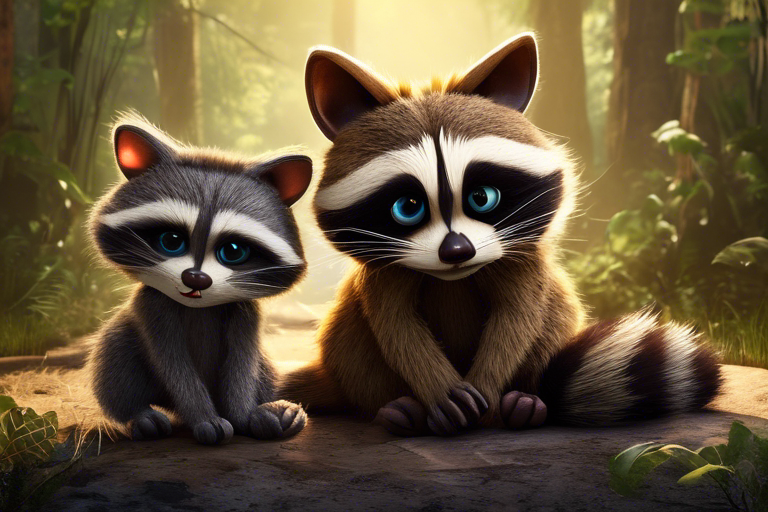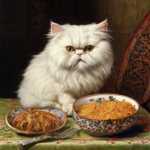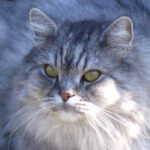## Introduction to Interspecies Relationships
Interspecies relationships have long fascinated humans, sparking curiosity about the possibility of mating between different animal species. One such intriguing question is whether cats and raccoons can mate. In this article, we will delve into this myth and unravel the truth behind interspecies relationships. While nature is full of wonders, it is important to rely on scientific evidence to separate fact from fiction.
The Truth about Cat-Raccoon Mating
Can cats and raccoons mate? The short answer is no. Cats and raccoons belong to different biological families, making successful reproduction between the two highly unlikely. Cats are of the Felidae family, which includes domestic cats, lions, tigers, and other feline species. Raccoons, on the other hand, belong to the Procyonidae family, which includes animals like coatis and kinkajous.
Understanding the Reproductive Systems of Cats and Raccoons
To understand why cat-raccoon mating is not possible, it is essential to explore the differences in their reproductive systems. Cats have a unique reproductive anatomy that allows for successful mating within their own species. Female cats have a reproductive cycle controlled by hormones, while males have specialized reproductive organs that enable them to fertilize the eggs of a female cat.
Raccoons, on the other hand, have a distinct reproductive system that is different from cats. Female raccoons have a polyestrous reproductive cycle, meaning they experience multiple estrus cycles within a breeding season. Male raccoons have a penis bone called a baculum, which is absent in cats. These fundamental differences in reproductive systems create barriers that prevent successful mating between cats and raccoons.
Genetic Compatibility and Barriers
Beyond the anatomical differences, genetic compatibility also plays a crucial role in interspecies mating. In order for successful reproduction to occur, the genetic makeup of the parents must be compatible. Cats and raccoons have distinct genetic compositions, making it highly unlikely for their genetic material to combine successfully and produce viable offspring.
Furthermore, genetic barriers exist that prevent hybridization between different species. These barriers can include variations in the number and structure of chromosomes, incompatible gametes, or differences in genetic regulatory mechanisms. These natural barriers act as safeguards to maintain the integrity of each species and ensure the preservation of their unique characteristics.
Anecdotal Evidence and Misconceptions
Despite the scientific evidence against cat-raccoon mating, anecdotal stories and misconceptions continue to circulate. Some individuals claim to have witnessed cat-raccoon hybrids or have heard stories from others. However, without concrete scientific evidence, it is important to approach such claims with skepticism.
Misconceptions may arise from similarities in physical appearance between cats and raccoons. Both animals possess fur, sharp claws, and a certain level of agility. These shared characteristics can sometimes lead to confusion or misidentification, fuelling the belief in cat-raccoon hybrids. However, it is crucial to rely on scientific research to separate fact from fiction.
Exploring Other Interspecies Relationships
While cat-raccoon mating is not possible, it is worth exploring other fascinating interspecies relationships. Nature presents us with remarkable instances of symbiotic relationships, where two different species mutually benefit from their association. Examples include cleaner fish and larger marine animals, like sharks or manta rays, where the cleaner fish clean parasites off the larger animal’s skin in exchange for food.
Another intriguing example is the relationship between certain birds and herbivorous mammals. Oxpeckers, for instance, perch on large animals like rhinos or zebras, feeding on ticks and other parasites that reside on the host’s skin. These examples highlight the awe-inspiring diversity of interspecies relationships in the animal kingdom.

The Role of Domestication in Interspecies Mating
The concept of domestication has played a significant role in shaping interspecies relationships. Humans have selectively bred animals for thousands of years, leading to the emergence of domesticated species. Domestication has altered the behavior and reproductive traits of animals, making them more compatible with humans and other domesticated animals.
While domestic cats and dogs are examples of successful interspecies relationships, their ability to mate and produce viable offspring is the result of selective breeding and genetic manipulation by humans. However, even within domesticated species, there are limits to interspecies reproduction. For instance, a domestic cat and a domestic dog are incapable of producing offspring due to the genetic barriers between the two species.
Ethical Considerations and Conservation Efforts
Interspecies mating raises ethical considerations, particularly when it comes to conservation efforts. Preserving the genetic integrity of endangered species is crucial for their survival. Introducing foreign genetic material through interspecies mating can threaten the genetic purity of endangered populations, potentially diluting their unique characteristics and reducing their chances of survival.
Conservation organizations and researchers work tirelessly to protect endangered species and maintain their genetic diversity. These efforts involve implementing breeding programs that carefully select compatible mates within the same species, ensuring the preservation of genetic integrity. By focusing on species-specific conservation strategies, we can safeguard biodiversity and maintain the delicate balance of nature.
Unraveling the Truth: Scientific Studies and Findings
Scientific studies have been conducted to explore the possibility of interspecies mating between cats and raccoons. These studies involve analyzing the genetic material of both species, examining their reproductive anatomy, and conducting controlled mating experiments. The overwhelming consensus from these studies is that successful mating between cats and raccoons is biologically impossible.
One such study conducted by renowned geneticists analyzed the DNA of multiple cats and raccoons to assess their genetic compatibility. The results revealed stark genetic differences between the two species, confirming the absence of any recent or ancient hybridization events. These findings, along with other scientific research, provide concrete evidence to debunk the myth of cat-raccoon mating.
Conclusion: Debunking the Myth and Celebrating Biodiversity
In conclusion, the myth of cats and raccoons mating is just that—a myth. Cats and raccoons belong to different biological families, have distinct reproductive systems, and possess incompatible genetic material. While nature is full of wonders, it is important to rely on scientific evidence to separate fact from fiction.
Interspecies relationships exist in various forms throughout the animal kingdom, offering a glimpse into the complexity and diversity of life on Earth. By celebrating and understanding these relationships, we can deepen our appreciation for the intricate web of life that surrounds us. Let us continue to marvel at the wonders of nature and strive to preserve the biodiversity that makes our planet so remarkable.
Join us in celebrating the beauty of biodiversity and the wonders of nature. Support conservation efforts and help protect endangered species for generations to come.






